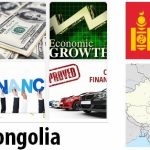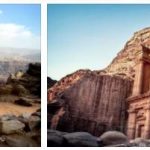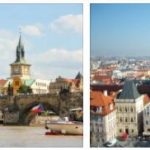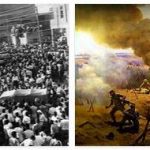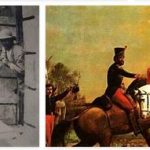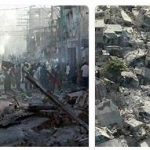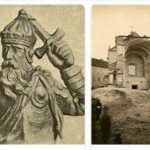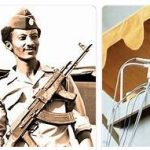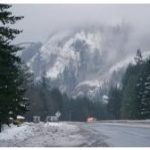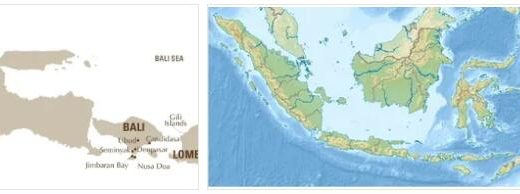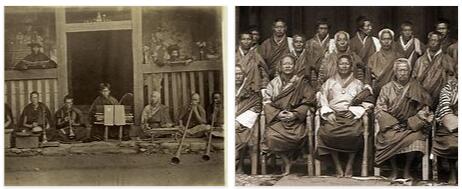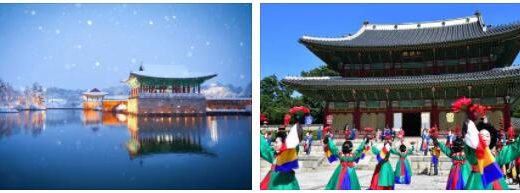Mongolia History
Inhabited since prehistoric times, Mongolia saw various ethnic groups impose themselves on its territories: the Huns created a great tribal empire and were then replaced by Turkish peoples who reigned until the arrival of the mythical leader Genghis Khān who in 1206 gave birth to the Mongol empire. The Manchu dynasty in the century. XVII conquered Mongolia and ruled it until its fall (1911) when the Mongol aristocracy of Outer Mongolia proclaimed its independence with the establishment of an autonomous government headed by Maidari Khutukhtu, supreme exponent of the Mongolian Lamaist Church, while Inner Mongolia remained united with China. However, China did not easily give up its sovereignty over Outer Mongolia – which had become a de facto Russian protectorate – and sent an army there in 1919 to regain control. In 1921, the arrival of the white Russian troops of the adventurer Ungern-Sternberg put an end to the Chinese presence in Outer Mongolia. Subsequently the forces of Ungern-Sternberg were annihilated by the Red Army, which could also avail itself of the support of the Mongolian revolutionary movement led by the former typographer Suké-Bator. With the founding of the People’s Republic of Mongolia in 1924, a process of profound transformation of the economic and social structures of Outer Mongolia began. The land and mineral resources were nationalized, while the privileges of the aristocracy and the Lamaist monasteries were decisively affected. During the Second World War the People’s Republic of Mongolia took part in the fight against the Japanese alongside the USSR, with which ties became ever closer. Reiterated its need for autonomy at the end of the conflict, in 1950 it was recognized independent by the People’s Republic of China (Soviet-Chinese treaty).
Around 1960, with the rise of the ideological dispute between the USSR and China, Mongolia sided with the former, with which since 1946 it had entered into a treaty of friendship and assistance, and after the break between the two countries it was involved in the tensions and suffered the consequences (withdrawal of Chinese aid and technicians, closure of ports to its merchant ships). From 1966, however, relations with China improved, while diplomatic relations were gradually established with other countries, not only the socialist bloc (remember in 1961 the entry to the UN and the opening of diplomatic relations in 1963 with Great Britain, in 1965 with France and the USA, in 1972 with Japan). According to aceinland, the tensions with neighboring China, however, persisted until 1986, year in which consular and commercial relations between the two countries were re-established. Furthermore, in 1988, Mongolia and China signed the first treaty to delimit the common border, after the announcement of the withdrawal of military forces by the Soviet government (1987), and soon reached the complete normalization of relations. In the meantime, on the internal level, the country was undergoing a process of renewal of the political leadership, stimulated by the perestroika Soviet, assumed as a principle of government in 1988, and opened up to democratic pluralism (1990), abolishing the leading role assumed by the Mongolian People’s Revolutionary Party (PRPM) for almost seventy years.
In March 1990 the pragmatic and energetic Jambyn Batmunk, head of state and secretary general of the PRPM since 1984, was replaced by a member of his party, Punsalmaagiyn Ochirbat, who in September of the same year obtained the presidential investiture from the first freely elected Parliament (July 1990). Furthermore, in order to guarantee the political impartiality of the highest offices of the state, in 1991 a law was passed that decreed the incompatibility between the highest government functions and membership in a political party, following which Ochirbat resigned. from the PRPM. In 1992, with the adoption of a new democratic Constitution (February 1992) the country assumed the official name of the Republic of Mongolia and the first real multi-party elections were held (June 1992), which however determined a landslide victory for the PRPM over the other forces in the field. In the subsequent presidential elections of 1993, Punsalmaagiyn Ochirbat, despite having passed to the opposition, was also re-elected as head of state. Defeated, therefore, in the first free elections the democratic opposition coalition, it was transformed into a democratic union and in June 1996 it won the new elections for the renewal of Parliament, relegating the PRPM to the opposition for the first time in its history. By virtue of this result, the Parliament, the Great Hural, elected National Democrat Mensaikhan Enkhasaikhan as Prime Minister in place of Communist Puntsagiyn Jasray. The widespread discontent with the government’s economic policy favored, however, in the subsequent presidential elections of May 1997, again a candidate of the PRPM, Ntsagiyn Bagabandi, who was elected head of state with ca. 60% of the votes. This result, therefore interpreted as a punitive vote against the reforms applied by the government for a transition of the country towards a liberal economy, led to the replacement of the incumbent prime minister in 1998: the national-democratic Tsahiagiyn Elbergdorj was appointed. The following month, however, the government resigned and a phase of political tension began. The legislative elections of 2000 thus saw, with a clear affirmation, the return to the government of the Revolutionary Party of the Mongolian people. In the presidential elections of 2005, former Prime Minister Nambar Enkhbayar, candidate of the Mongolian People’s Revolutionary Party, made a name for himself; in November of the same year the president of the United States GW Bush he officially visited Mongolia and thanked Enkhbayar for the support he had given during the war in Iraq, by sending one hundred select soldiers. In the two-year period 2006-2007 the foundations were laid for the development of various economic cooperation projects with Russia, in particular in the exploitation of underground resources. In July 2008 the parliamentary elections won by the ex-communists of the PRPM took place; this result sparked violent protests in the capital which forced President Enkhbayar to declare a state of emergency. In June 2009, opposition leader Tsakhiagiin Elbegdorj won the presidential elections, defeating outgoing president Enkhbayar.


